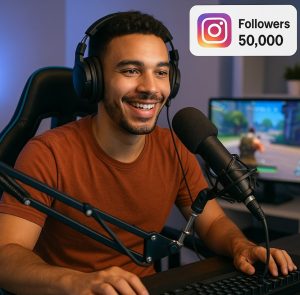Technology nowadays needs to do more than just work. It needs to have personality in our digital world. We are now in the era in which technology can humanize AI, which are systems and applications developed to improve the naturalness, relatability, and emotional resonance of human-computer interactions. But the question lies behind the way these technologies can compile the difference between impersonal code and personal connection? Let’s try to analyze them one-to-one.
NLP: Understanding and Creating Speech Naturally
 Natural Language Processing is the system of crafting human-written pieces by AI. The said AI feature allows the computers to read and write materials that sounds like that of a human. Deep learning and other innovative methods make language models recognize meanings behind text, control intonation, and express emotions. This refers to non-player characters (NPCs) in video games that have realistic conversations with players.
Natural Language Processing is the system of crafting human-written pieces by AI. The said AI feature allows the computers to read and write materials that sounds like that of a human. Deep learning and other innovative methods make language models recognize meanings behind text, control intonation, and express emotions. This refers to non-player characters (NPCs) in video games that have realistic conversations with players.
Chatbots that provide empathy as well as information are powered by it in the larger tech industry.
Detecting and Handling Emotional Signs
Emotion is an interactive force behind working better. AI also covers another aspect that defines people’s feelings. These depend on one’s facial expressions, situation, or language. With that, game characters may be able to realistically respond to other player’s actions. Examples of such include congratulating others for a win or sharing affection about one’s loss. Meanwhile, virtual assistants in customer-facing tech can change their tone to soothe annoyance or keep a user’s spirits up.
Learn to Reinforce: How to Teach AI to Adapt
Artificial intelligence systems are able to learn from their mistakes because of reinforcement learning (RL). With RL, AI in-game enemies or allies can adapt their actions to counter player strategy, resulting in answers that are both unexpected and logical. Applications in the tech sector, such as personalized learning systems, use RL to modify course materials according to each student’s unique needs and learning speed.
A World of Dynamic and Personalized Procedural Content Generation (PCG)
PCG uses algorithms to dynamically create material, including levels, missions, and dialogue. With the use of AI-powered humanizers, PCG is able to design experiences that seem personalized for every player. Envision a game where your past actions inform the tale, or a platform that tailors the user interface text to your tastes.
You may also read “Exploring User-Centered Design in Video Game Development” for more information on how player actions impact game mechanics. It’s an ideal companion for learning the “why” as well as the “how” of AI with a human touch.

 Instagram isn’t the first platform that comes to mind when you think of gaming. Twitch and YouTube are where gameplay is typically showcased. However, behind the scenes, Instagram plays a crucial role in how streamers
Instagram isn’t the first platform that comes to mind when you think of gaming. Twitch and YouTube are where gameplay is typically showcased. However, behind the scenes, Instagram plays a crucial role in how streamers